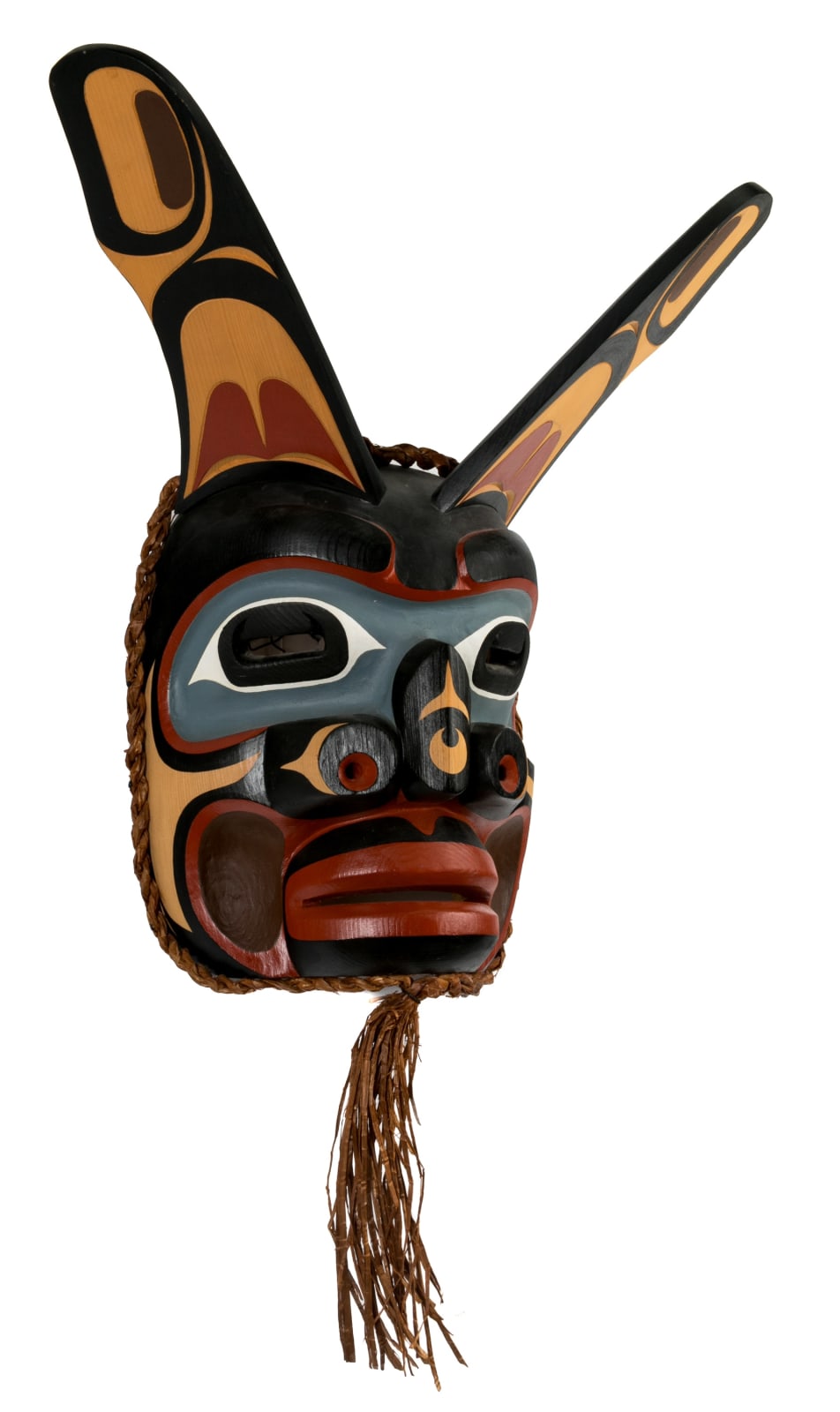-
Artworks
TREVOR HUNT (1975-) KWAKWA̱KA̱ʼWAKW, FORT RUPERT, B.C.
Sea Monster Mask, 27 Feb 2003cedar wood, acrylic paint, and acrylic paint, 23 x 19.5 x 7.75 in (58.4 x 49.5 x 19.7 cm), measurements reflect dimensions without cedar bark fringe
dated, "Feb 27th / 2003";
titled, signed, and inscribed, '"Sea Monster" / Trevor Hunt / Fort Rupert, BC / Tsakis".LOT 78
ESTIMATE: $1,200 — $1,800
PRICE REALIZED: $2,160.00Further images
Trevor Hunt is the son of Stan Hunt and grandson to Henry Hunt. His family of 14 aunts and uncles is a powerful artistic dynasty of artists and cultural leaders....Trevor Hunt is the son of Stan Hunt and grandson to Henry Hunt. His family of 14 aunts and uncles is a powerful artistic dynasty of artists and cultural leaders. The Hunt family contributed to the development of the Northwest Coast art market by supporting the training of new artists, artistic excellence and a gallery environment where the work could be properly displayed. They also established a modern ceremonial platform which has supported a new generation of artists that includes Trevor Hunt, his brother Jason as well as numerous cousins who continue the powerful family artistic legacy.
Komokwa is danced as part of the Undersea Kingdom or the legend of Seawedi (Born to be the Head of the World). This story is an account of a young chief who is betrayed by an uncle seeking his position. He is left beaten and unconscious on an outcrop of rocks in the ocean but is rescued from near death by an octopus who takes him into the undersea kingdom where he heals and thrives. He is eventually overcome by the urge to go home and to reclaim his rightful position and restore the family lineage. He receives supernatural gifts from Komokwa that aids in his quest which, in the end, is successful. He hosts a potlatch to claim his position and the hereditary rights of his family. Komokwa is a complex character associated with tides, eddies, weather, the great wealth of the ocean as well as the many connections between the natural and supernatural realms.
A potlatch is divided into two parts, the first half is dedicated to the secret societies and the second half celebrates social and family ties including the participation by guest chiefs and families. Komokwa may appear near the end as comic relief after the long ceremonial agenda is complete. The host family implies that the water is rising and a flood is eminent - someone would nervously stand at the door to monitor the rising water. A blast of water will spray the room and Komokwa pushes past the attendants and commands the room. Sometimes, to show the scale of Komokwa, a loon is added to the top of the head to depict the bird landing on the crown of komokwa as he can be easily mistaken for a large island.
Gary WyattProvenance
Seahawk's Auctions, Burnaby, BC, 27 March 2011, Lot 68;
Acquired from the above by the present Important Private Collection, Pittsburgh, PA.
Join our mailing list
* denotes required fields
We will process the personal data you have supplied in accordance with our privacy policy (available on request). You can unsubscribe or change your preferences at any time by clicking the link in our emails.






